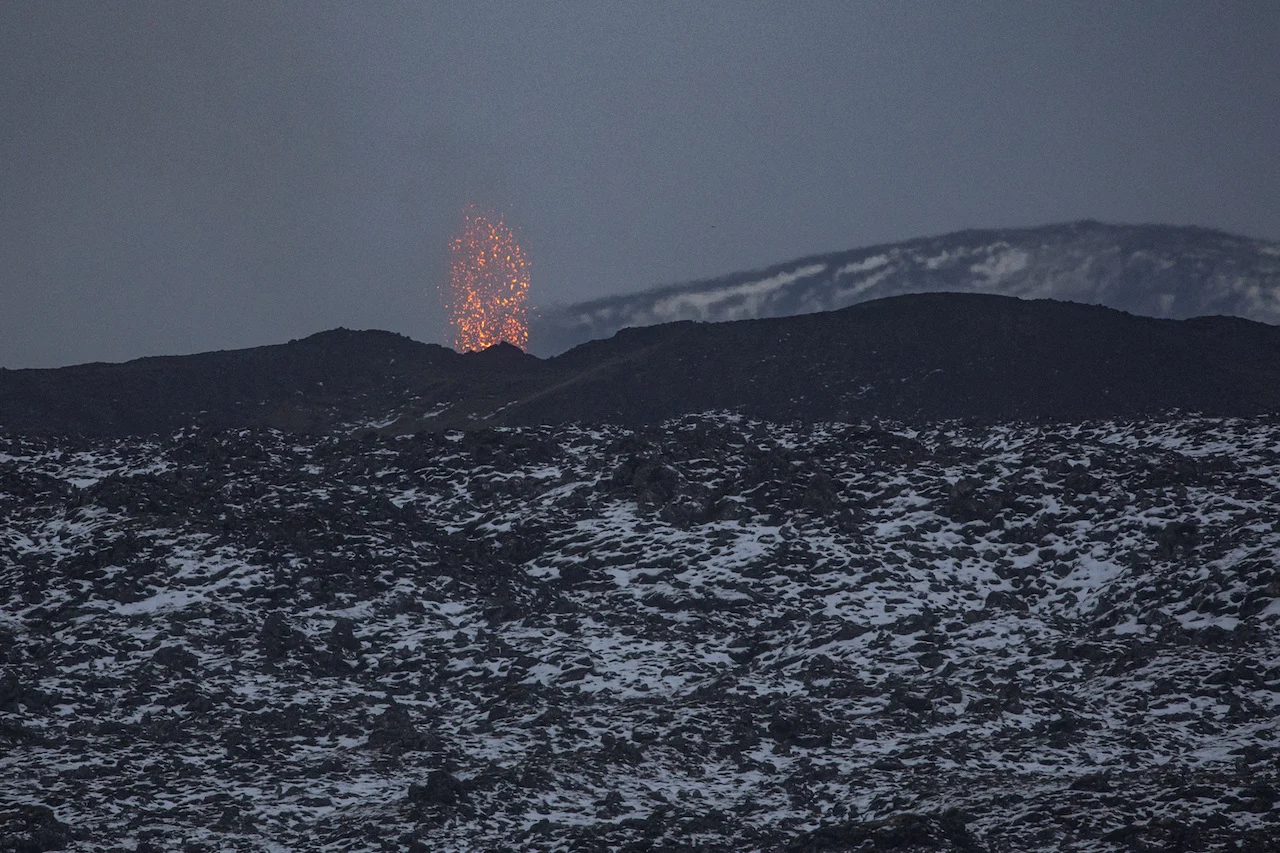
Lava flows from Iceland volcano continues to decrease
Lava flows from a volcano in Iceland were slowing on Wednesday, the Icelandic Metrological Office said on Wednesday, as the eruption looked set to spare a nearby town that was evacuated following weeks of earthquakes.
The eruption late on Monday on the Reykjanes peninsula in southwest Iceland spewed lava and smoke more than 100 metres (330 feet) into the air in a dramatic finale to weeks of waiting after the alarm was first raised over the seismic activity.
The government has said flights were unlikely to be impacted, easing worries of a repeat of the international travel chaos caused by the ash from another Icelandic volcanic eruption in 2010 just as the busy holiday travel season kicks in.

A drone picture shows lava spewing from the site of the volcanic eruption north of Grindavik, Iceland, December 20, 2023. REUTERS/Marko Djurica
Authorities last month evacuated the nearly 4,000 inhabitants of the fishing town of Grindavik, about 40 km (25 miles) southwest of capital city Reykjavik, allowing them back intermittently to check on homes put at risk by the tremors.
The eruption in the Svartsengi volcanic system might end over the weekend or next week or lava flows could continue at a slow rate for weeks or months, similar to what happened at the nearby Fagradalsfjall system in 2021, Halldor Geirsson, associate professor at the Institute of Earth Sciences at the University of Iceland, told Reuters.
Meanwhile, gases associated with the eruption briefly spiked on the peninsula on the southwestern tip of Iceland that also accommodates the island's main international airport, which remained open though some flights suffered delays due to heavy snowfall, an airport spokesman said.
The level of sulphur dioxide in the air near the town of Keflavik, where the airport is located, rose from 0.2 micrograms per cubic metre at 0650 GMT to above 1,300 an hour later, according to Iceland's environmental agency.

Lava spews from the site of a volcanic eruption north of Grindavik, Iceland, December 20, 2023. REUTERS/Marko Djurica
The levels soon returned to normal. Sulphur dioxide can be harmful to health at high concentrations and officials had cautioned that gas pollution could occur in the area of nearby Reykjavik late on Tuesday or Wednesday morning.
The eruption is the fourth in the region since 2021. Geirsson told Reuters that the activity in the region shows that Iceland has started a sequence of volcanic eruptions.
"I think everything is pointing towards that we have a few hundred years of activity ahead of us," he said. "It does not mean that we will have an eruption every year, but certainly more frequent than in the past 800 years."
The government has said the eruption does not present a threat to life.
Thumbnail courtesy of REUTERS/Sigurdur Davidsson.
(Reporting by Marco Trujillo and Marko Djurica, and Jacob Gronholt-Pedersen and Louise Rasmussen in Copenhagen; Writing by Niklas Pollard and Johannes Birkebaek; Editing by Alison Williams and Alex Richardson)








